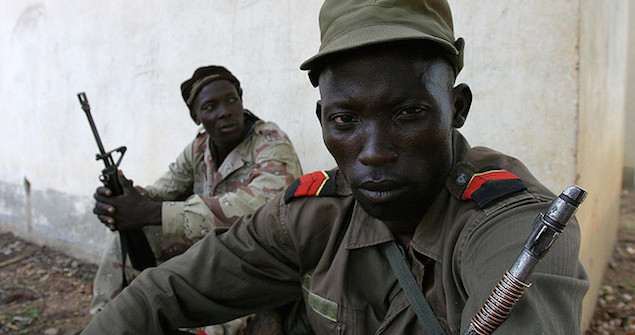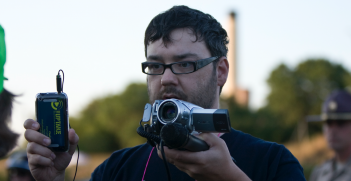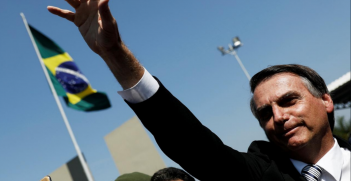The Forgotten Crisis: The Central African Republic

A forgotten crisis lurks in the Central African Republic where minimal exposure and delayed action has allowed conflict to escalate.
The Central African Republic (CAR) is one of the world’s poorest states, with the UN’s Human Development Index ranking it 180 out of 186. Its economic demise and longstanding instability have received minimal, if any, exposure internationally. An unfortunate consequence of this minimal exposure is that it has not only prolonged the current conflict but has also allowed it to escalate.
Since late 2012, the CAR has been engulfed by a devastating internal conflict. After the Bozize Government was overthrown in March 2013 by the Seleka Muslim rebel group, the CAR suffered from an enduring political struggle between religious-ethnic groups. The scale and longevity of this particular conflict should have warranted an international response more fitting with its dynamics. The international community pledged to prevent future tragedies like Rwanda and Somalia, having learnt the consequences of inaction. However, unfortunately for those in the CAR, the promises of the past have failed to materialise. This conflict has not received the kind of public exposure and call to action that it should have.
To provide some perspective:
- The conflict has caused more deaths than the Ebola virus, falling somewhere between 6000 and 10 000 casualties;
- Approximately half the population (about 2 million people) has been either internally displaced, is seeking refuge in neighbouring states, or is in desperate need of humanitarian assistance. Percentage wise, these figures are comparable with, if not worse, than the Syrian crisis;
- The UN’s Multidimensional Integrated Stabilising Mission in the CAR (MINUSCA) is predicted to be one the most expensive, making it third behind longstanding missions in South Sudan and the Democratic Republic of the Congo.
With figures such as these, it begs the question: why does no one seem to care?
The severity of the crisis has not been lost on UN secretary-general Ban Ki-moon, who has repeatedly urged that greater international scrutiny and meaningful attention be paid towards the CAR. Regional and neighbouring actors have reiterated the secretary-general’s warnings as they appreciate how close the CAR is to approaching collapse, which would further destabilise Central Africa. However, these concerns pale in comparison to those of the CAR’s first female president, Ms Samba-Panza, who stated that “without massive support and assistance from the international community…we will not meet our goal of stabilising the country and restoring constitutional order”.
One major problem is the delay in response. After much pleading with UN members by CAR officials and the secretary-general, on 10 April 2014, the UN Security Council (UNSC) authorised and assembled the international community’s response in the form of MINUSCA. It deployed on 15 September 2014, with the mandate to protect civilians and restore the country to rule of law in partnership with the Samba-Panza Interim Government. However, there are two problems with this response. First, it is too late. The most severe fighting occurred over a year ago, when the Christian ‘anti-Balaka’ militia group reacted in overwhelming fashion against the Seleka. By the end of 2013, only a small number of Muslims remained in the capital, Bangui, a place where religious bipartisanship was the norm.
Second, the military commitment and makeup of MINUSCA is a damning representation of the international community’s commitment, or interest, in rescuing the CAR. Apart from France, who feel somewhat responsible for the collapse of their former colony, the peacekeeping contingent is made up of developing states, which do not have the same resources and level of military proficiency as the developed states. These include: Rwanda, Bangladesh, Burundi, Cameroon, Gabon, Morocco, DR Congo, Congo, and Pakistan. This lacklustre response is nothing new, and only adds to a history of ill-equipped strategies for the CAR.
Before the agreement to initiate the MINUSCA peacekeeping mission, France deployed under 3000 peacekeepers to assist the 6000 African Union (AU) peacekeepers that were operating in the CAR. However, the combined force proved largely ineffective due to a limited mandate and subsequent rules of engagement. Criticism was directed at the combined force’s decision to centralise their position in the capital Bangui, abandoning the rest of the country to anarchy. Consequently, their presence was considered more as a way to deter rebel groups from seizing complete control of the CAR, as opposed to a comprehensive strategy to rescue the state from complete collapse.
The international community is too often caught up in the hype of events that receive extensive media exposure. For example, a European Union (EU) diplomat explained that the conflict between Ukraine and Russia “has impacted on the willingness of some of the likely contributors both in the EU and outside the EU to be necessarily ready to deploy to Central African Republic.”
In recent years, conflicts such as Syria and Afghanistan have dominated world attention due to their economic and politically strategic value to the world’s superpowers. In addition, the threat of a nuclear North Korea, and the potential spread of Ebola outside the African continent have saturated international media because of their impact on the developed world. These examples have one thing in common — strategic value. The CAR offers minimal economic and geo-political value. This is, unfortunately, a contributing factor when formulating an effective solution for the CAR.
The untimely deployment of MINUSCA and the history of ineffective solutions for the CAR by the international community demonstrate how state-centric the international system is in reality. Despite the rise of regionalism and the purpose of international multilateral organisations, such as the UN, the CAR’s lack of strategic value could be regarded as the chief reason why its conflict has continued. The escalation of the conflict in the CAR can be viewed as a symptom of the highly bureaucratic nature of the UN. The effectiveness of this multilateral body has, and still is, hamstrung by the individual needs of its members. If the international community is serious about preventing mass atrocities and humanitarian disasters, responses need to be formulated at the genesis of a problem, not in retrospect.
Aydon Edwards has an MA in International Studies from the University of Queensland and completed an internship with AIIA Queensland in 2013. This article was originally published in the December edition of The Transnational Review. It is republished with permission.





